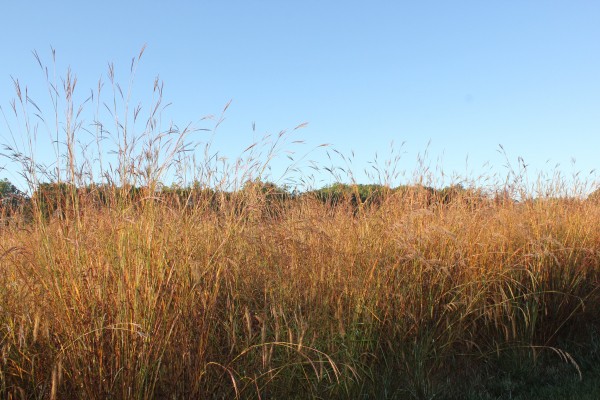Could cellulosic biofuels – or liquid energy derived from grasses and wood – become a green fuel of the future, providing an environmentally sustainable way of meeting energy needs? Scientists from several institutions, including the University of Maryland, say yes, but with a few important caveats.
A research team at the U.S. Department of Energy-funded Great Lakes Bioenergy Research Center (GLBRC) spent the past ten years studying the potential impact of cellulosic biofuels. Their findings were published today in Science.
“The climate benefit of cellulosic biofuels is actually much greater than was originally thought,” says Phil Robertson, University Distinguished Professor of Ecosystem Science at Michigan State University (MSU) and lead author on the study. “But that benefit also depends crucially on several different factors, all of which we need to understand to get right.”
Although not yet a market force, cellulosic biofuels are routinely factored into future climate mitigation scenarios because of their potential to both displace petroleum use and mitigate greenhouse gas emissions. Those benefits, however, are complicated by the need for vast amounts of land to produce cellulosic biofuels on a large scale.
"These past ten years of empirical and modeling research on biofuels allowed us to confirm the significant role that perennial species could play in developing a sustainable biofuels industry in the U.S. and elsewhere," says R. Cesar Izaurralde, a research professor with the University of Maryland Department of Geographical Sciences and lead of the modeling team for this research. "Challenges remain to develop methods to design and demonstrate biofuel landscapes that optimize feedstock production, generate income, induce environmental benefits, and contribute to the development of a vital renewable energy industry."
The researchers identified several emerging principles for managing the complex environmental tradeoffs of cellulosic biofuel:
1) The researchers show how growing native perennial species on marginal lands – i.e., land not used for food production because of low fertility or other reasons – avoids competition with food security, and provides the greatest potential for climate mitigation and biodiversity benefits.
2) Crop choice is key. Native perennial species offers superior environmental outcomes to annual crops, but no single crop appears to be ideal for all locations. In fact, in some cases mixed species crops provide superior benefits.
3) Nitrogen fertilizer use should be avoided or minimized because of its contribution to global warming and other environmental impacts.
According to the researchers, these principles (as well as four more outlined in the paper) are enough to begin guiding sound policy decisions for producing sustainable biofuels. Looking forward, however, the team calls for more research on designing landscapes that could potentially provide the optimal suite of energy, climate, and environmental benefits. They say that understanding how best to integrate these benefits will be key to the future success of cellulosic biofuels.
“With biofuels, the stakes are high,” says Robertson. “But the returns are also high, and if we take key principles into account we can begin shaping the policies and practices that could help make cellulosic biofuels a triple win for the economy, the climate, and for environmental sustainability in general.”
Additional GLBRC scientists contributing to this paper include Bradford Barham, Bruce Dale, Stephen Hamilton, Randall Jackson, Douglas Landis, Scott Swinton, Kurt Thelen, and James Tiedje.
The University of Maryland is a participating member institution of the GLBRC, one of three bioenergy research centers established in 2007 by the Biological and Environmental Research program in the U.S. Department of Energy’s (DOE) Office of Science. Housed at both the University of Wisconsin-Madison and Michigan State University, GLBRC’s goal is to conduct transformational research and build the foundation of new cellulosic biofuels technology. For more information, visit www.glbrc.org.
*This article and its contents has been derived from The University of Maryland College of Behavioral & Social Sciences and can be found
here*
Please find pdf versions of the articles
here.
Published on Thu, 06/29/2017 - 14:33



